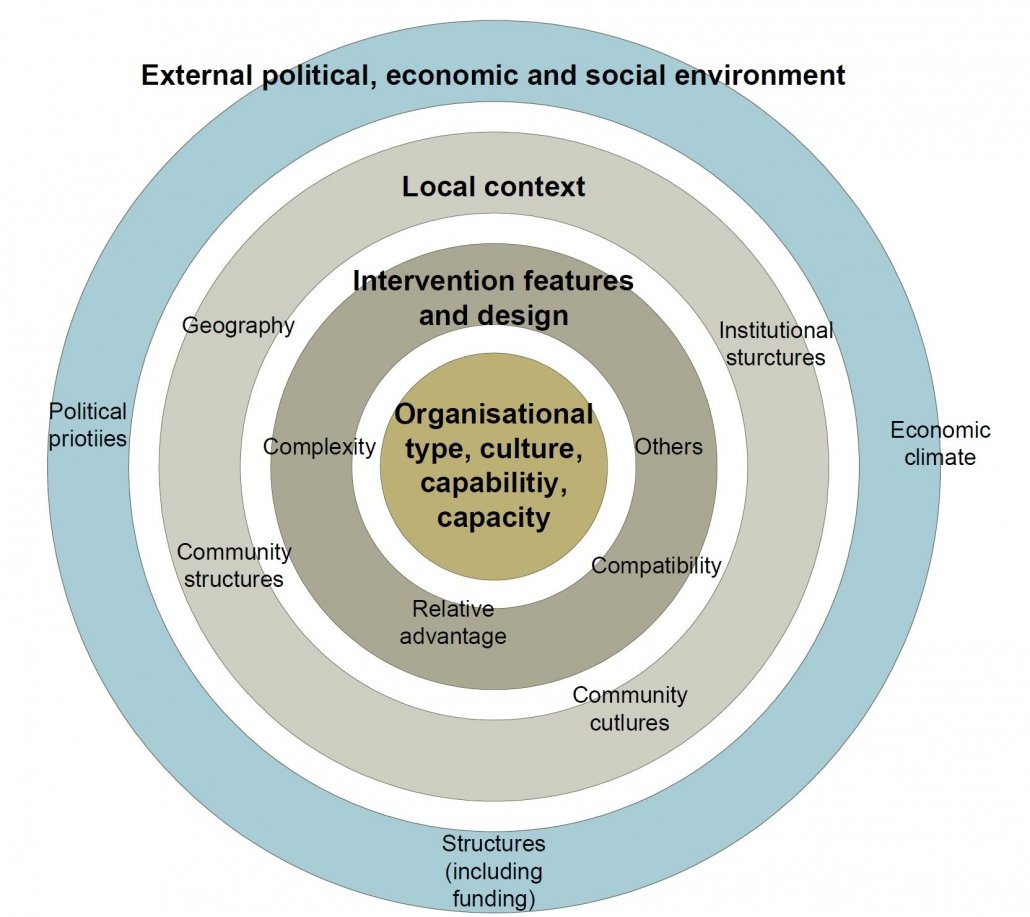Our Activities
We analysed the equity interventions detected by the project by creating a typology of approaches from the data and contextualising the cases within overall research into the field (including that done in the IDEAS project), with the aim of answering key questions.
What organizational policies and values are most likely to lead to success?
Which methodologies have the highest effectiveness and efficiency?
Which funding models offer best chances for sustainability?
What policy elements allow interventions to thrive?
Analysing Transferability
 Successfully adopting someone else’s innovation is not necessarily straightforward. Indeed, the literature on innovation spread shows that this depends on a range of interlocking factors / variables, most notably:
Successfully adopting someone else’s innovation is not necessarily straightforward. Indeed, the literature on innovation spread shows that this depends on a range of interlocking factors / variables, most notably:
- An intervention that is: easy to understand; has shown to work; is based on a clear model and is nevertheless adaptable to local circumstances and is compatible with existing practices and values in the higher education institute, its past experiences and the needs of potential beneficiaries. This is important and helpful to foster the process of translating and implementing proven practices to a new context.
- An organization that: is supportive of the innovation, engages staff early and has a culture that values (or at least doesn’t punish) risk taking, uses staff with the right skills to implement the innovation. This is important because innovation is a process of intentional action and investigation with the aim to improve and transform. Having a focus on change is important.
- A local context that: is compatible with the innovative idea and where relationships with key stakeholders (gatekeepers, deliverers, stakeholders, potential partners) already exist or are created in the process of intervention design/adoption. This is important because higher education institutions are part of a broader local infrastructure with more stakeholders to take into account. Also knowing the context of locally defined minorities is important to prioritize. A supportive national and European policy context, evidenced by policies and strategies that tie in with the widening participation intervention. This is important because improving structural and sustainable change and success is only possible with sufficient resources, infrastructure and collaboration on different levels within institutions and with different stakeholders outside the institution. Having national and European policy support the targeted change and hold countries accountable are equally important.

